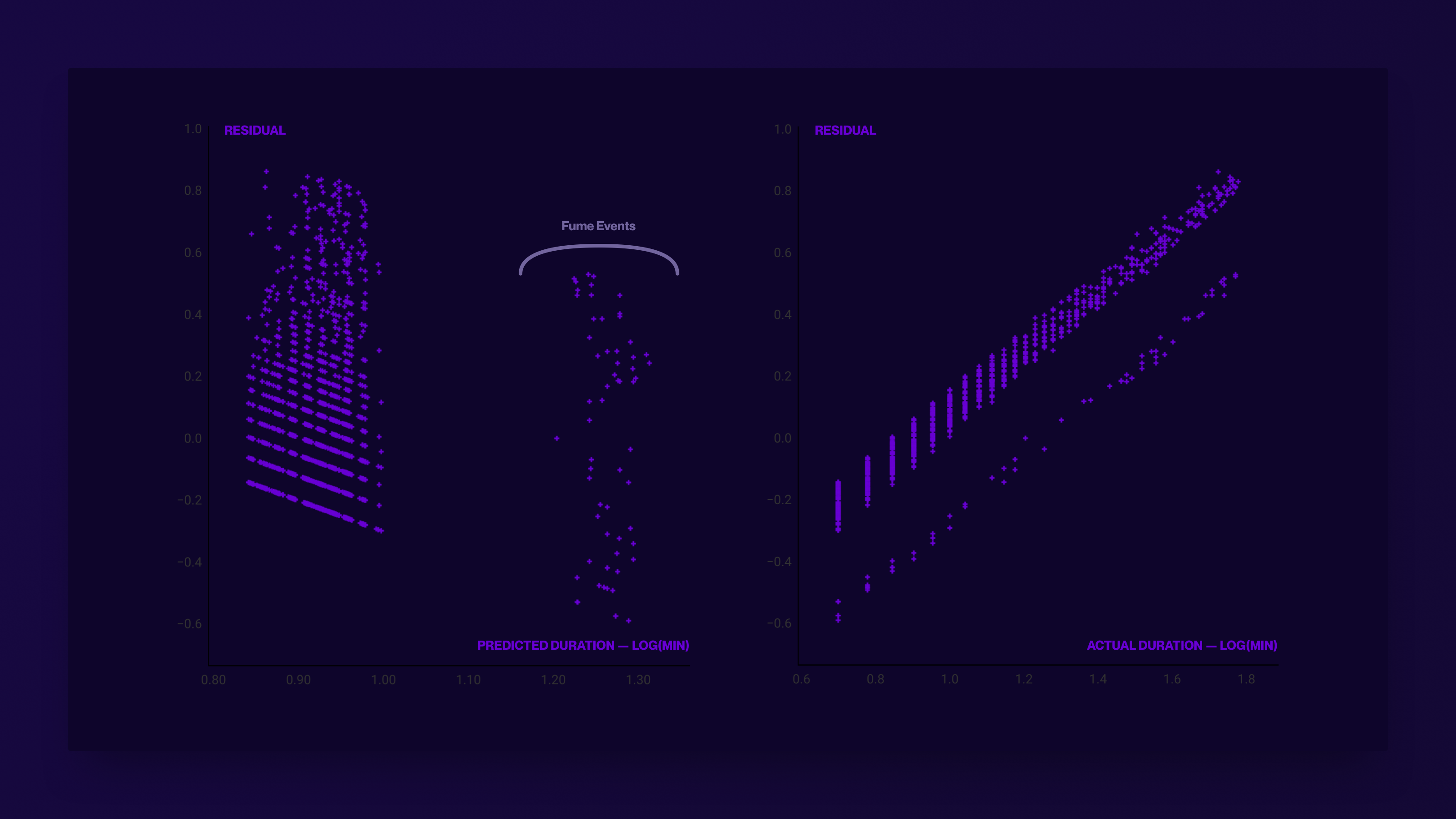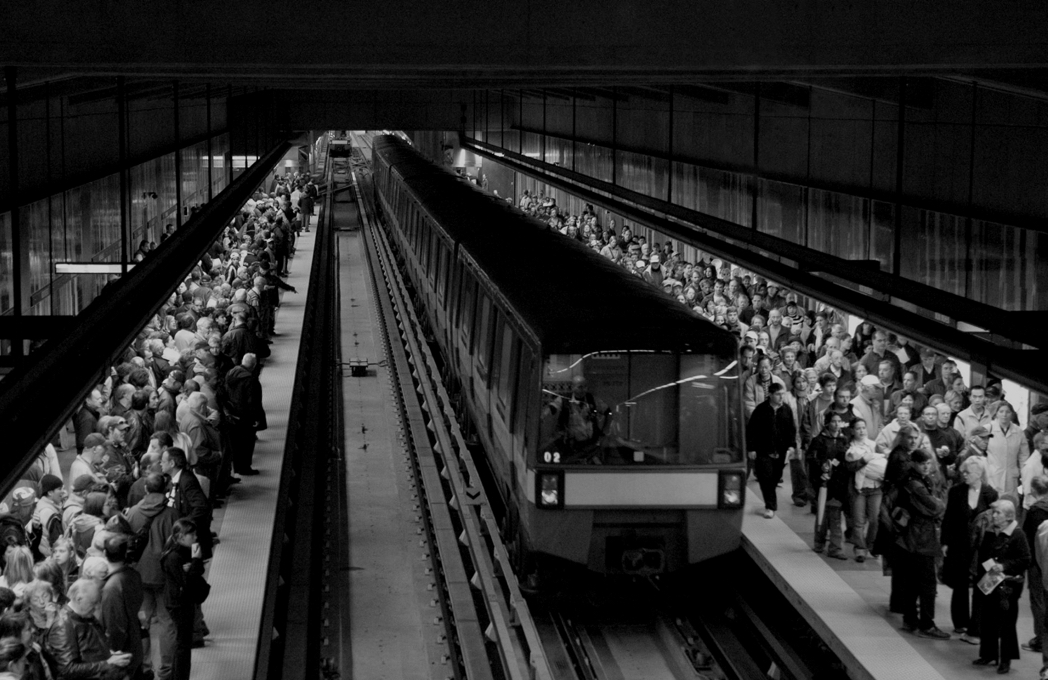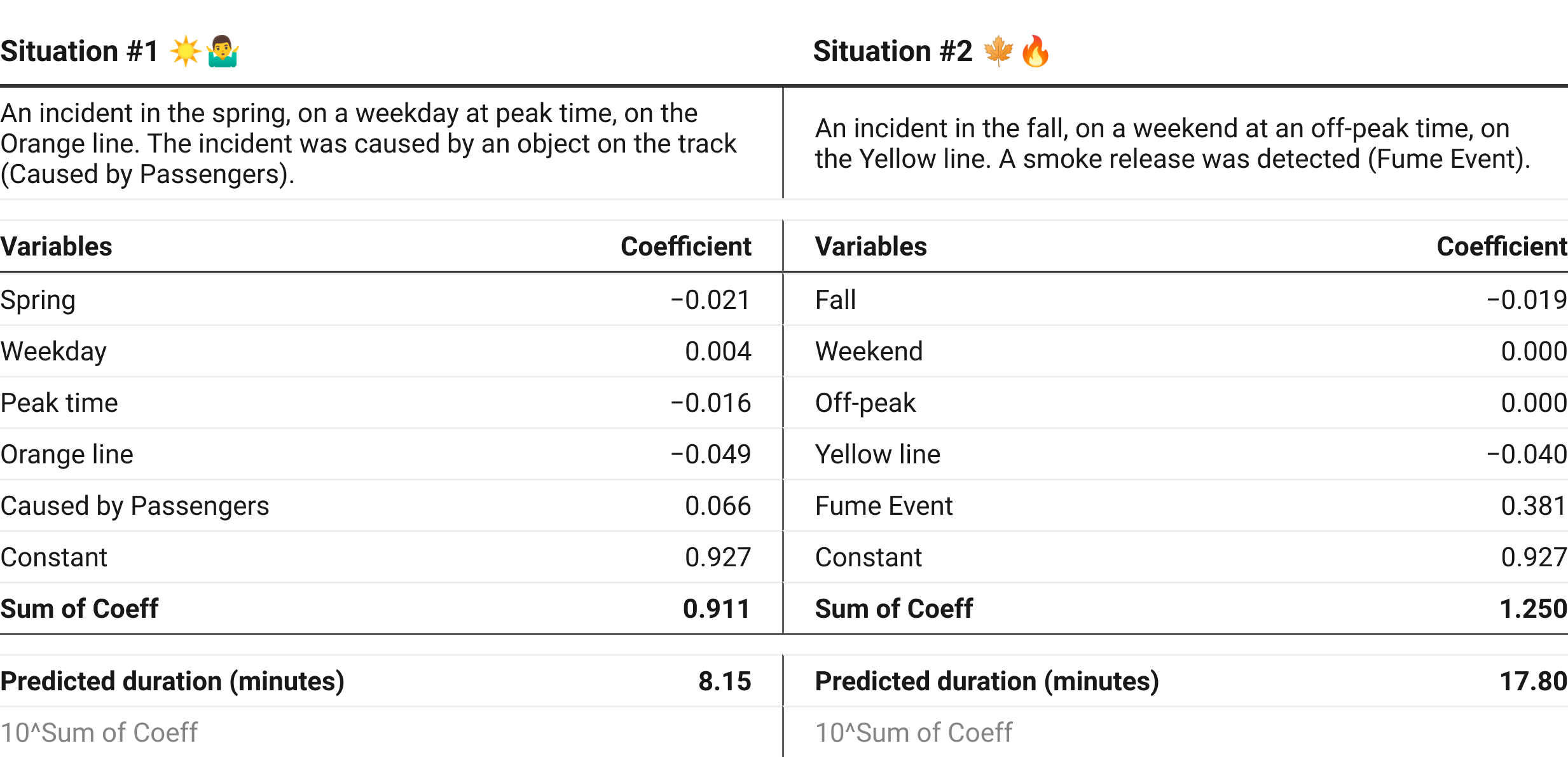
Challenge
Hundreds of thousands of metro commuters in Montreal are confronted each year with unplanned service interruptions. These disruptions result in extended travel times, frustration and uncertainty for riders. The frequent disruption of service is in fact the main reason for dissatisfaction among metro users (STM, 2022). Effective and continuous communication is a key factor in customer satisfaction during disruptions.
Objectives
The objectives of this research project are twofold: first, to introduce a detailed portrait of service disruptions, and second, to determine whether it is possible to rigorously predict their duration with the limited information initially available. The datasets used for this analysis came from the STM through the open data portal and an access to information request. The study period is from January 1, 2019 to October 31, 2021.


Photo (a) — Flooding at the Square-Victoria-OACI station. STM, 2019.
Photo (b) — Service disruption on the metro, unknown station. STM, 2017.
Analysis
Preliminary analysis of contextual data reveals some little-studied trends of the Montreal metro. There was a decrease in the total number of incidents between 2014 and 2021 despite an increase in the number of kilometers travelled. Service interruptions caused by customers and rolling stock together account for a large majority of the total number of incidents as well as the cumulative duration of interruptions for the study period. As for location, 84% of the 2,528 incidents between 2019 and 2021 affected the Orange and Green lines. Finally, the data also reveals that the majority of disruptions (66%) were resolved in less than 10 minutes, supporting the idea that riders should stick to their usual itinerary in the majority of cases and wait for the outage to end.
Chart: Probability of facing a service disruption on a weekday in 2019.
Case in point: a passenger riding the Green Line at 9:30 a.m. has an average 0.78% chance of facing an interruption of more than 5 minutes, compared to 0.21% at the same time on the Blue Line. These estimates were calculated by dividing the sum of interruptions in 2019 on the line for the weekday period by the sum of metro departures for the same period at a station on the line.
The variables studied to calculate the predictions of durations include season, day of the week,
period, metro line, and associated cause. The first ordinary least squares multiple linear
regression reveals that the selected variables explain only 6% (adjusted R2 of 0.0609) of the
variance of the logarithms of the interruption durations. The graphs of residual values also
highlight the problem associated with fume incidents, which is the cause with the longest observed
and predicted durations. Thus, we see that the spatio-temporal information available at the
beginning of an outage is a weak predictor of the duration of incidents, and that the associated
causes largely determine the speed of outage resolution.
A binomial regression using two subsets corroborates the initial results. The two subsets formed —
with observations of plus or minus 20 minutes — again reveal that some causes tend to be much longer
than average. A fume incident, for example, is 29 times more likely to last longer than 20 minutes
than an incident associated with rolling stock.

Table: Scenarios to illustrate the duration prediction of service disruptions.
Recommendations
While these results provide a general idea of the trends in service disruptions, it is difficult to predict with a low confidence interval the duration of an outage in the first few minutes, which could be beneficial to passengers. Nevertheless, transit stakeholders — decision-makers, operators, and communication teams — can adapt their processes to improve the customer experience. New performance indicators related to the impact on passengers could contribute to a better prioritization of response teams based on reported causes. Increased frequency of communications and multi-platform passenger information distribution would also help commuters who are able to do so to choose alternative routes and avoid potential extended delays.
Read the full article (French)